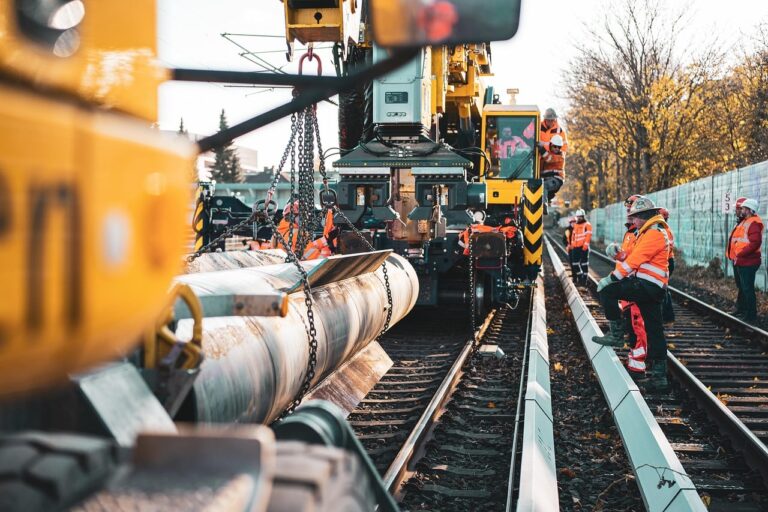Noise Pollution and Infrastructure Projects
How acoustic curtains improve noise control A recent uplift in infrastructure investment for roadways, utilities, residential and commercial buildings has unfortunately seen a concurrent increase in noise pollution. To address this, regulatory authorities are implementing new policies – which in turn are driving demand for acoustic curtains. What makes acoustic curtains an ideal solution? Noise…
How acoustic curtains improve noise control
A recent uplift in infrastructure investment for roadways, utilities, residential and commercial buildings has unfortunately seen a concurrent increase in noise pollution. To address this, regulatory authorities are implementing new policies – which in turn are driving demand for acoustic curtains.
What makes acoustic curtains an ideal solution? Noise is different from other types of environmental pollution. The elastic wave emitted by the sound source in the air is localised – it does not accumulate in the environment, does not last, and does not transmit over long distances. After the sound is stopped, the noise disappears.
Only when the sound source and the listener are both presents is the interference noticeable. Therefore, the noise must be controlled between the sound source (vibrating object), the route of transmission, and the recipient.
An assessment by an AcousTech noise control expert will determine where the installation of acoustic curtains is required.
Increasing awareness of noise impacts
A growing focus on employee health and wellbeing in industrial sectors, along with increasing awareness of the adverse health effects of noise pollution, has meant that businesses are turning their attention to improving noise control.
Shifting focus toward enhancing employee productivity may also encourage product use.
Konekt, Australia’s largest private provider of organisational health and risk management solutions, has estimated that workplace-related injuries cost the Australian economy around $60,000,600,000.00 each year. That’s a staggering 4.8% of our GDP.
As well as compensation claims, this figure also takes into account lost salaries, reduced productivity, and re-structuring, plus legal and administration costs.
Acoustic curtains solve workshop noise challenges
Acoustic curtains combine sound barrier and noise absorption properties into one flexible soundproof panel, meaning they achieve unprecedented noise reduction.
Flexshield acoustic curtains are used by many Australian companies – such as OneSteel Laverton – to solve workshop noise challenges. Full NATA test results are available.
The government has regulated a decibel time exposure allowance of 85dBA/8hrs to reduce employee harm and discomfort, as well as the risk of prosecution and litigation claims. Acoustic curtains such as Sonic Curtains help manufacturers and operators of noisy equipment adhere to these restrictions.
Our acoustic curtains, including SonicClear and sonic curtains, are the ideal solution for any environmental noise challenge, including:
- Machinery noise
- Construction/demolition noise
- Earth and roadwork noise
- Refurbishment on occupied buildings
- Office noise
- Sports hall noise
- Rooftop plant equipment
- Air conditioner noise
Not only do acoustic curtains reduce noise levels, but they also lessen and control the spread of dust, fumes and other contaminants. They are very durable, can be used indoors and outdoors, and are easily cleaned when dirty.
Talk to Flexshield for more information about acoustic curtains
If you’d like more information on Flexshield acoustic curtains, contact our team today on 1300 799 969 or download our site noise mitigation handbook.
Related Stories
-

Flexshield’s big month in industrial noise control – on the road from QLD to WA!
Taking action for hearing health and sustainable water management It’s been a busy month for the Flexshield team, and we’ve covered vast distances from Queensland to New South Wales, Victoria, and Western Australia. It’s been… -

The science behind tailored industrial noise control solutions for your project
7 key considerations for addressing noise pollution for your project When you’re managing noise on a job site, it’s important to understand the science behind industrial noise control and how to apply it effectively. Whether… -

World Hearing Day 2025: protecting workers’ hearing with Flexshield
Why prioritising hearing protection is essential for your workforce Each year on March 3rd, the World Health Organisation (WHO) marks World Hearing Day, raising awareness about hearing loss and promoting actions to protect auditory health….